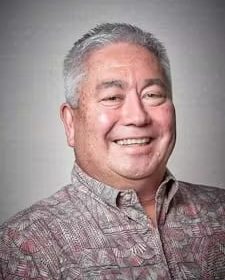Hawaii vacation rentals in huge demand
In May 2021, the total monthly supply of statewide vacation rentals was 572,900 unit nights (+71.8%) and monthly demand was 413,500 unit nights (+988.5%). That resulted in an average monthly unit occupancy of 72.2 percent (+60.8 percentage points) for May, which was higher than the occupancy of Hawaii’s hotels (61.5%). Overall, the numbers are substantially higher than in May 2020, which was the second full month of the devastating impact from the COVID-19 pandemic. When compared to May 2019, supply, demand, and average daily rates were lower for May 2021, but occupancy was about the same.
The unit average daily rate (ADR) for vacation rental units statewide in May was $236 (+25.4%), which was less than the ADR for hotels ($288). It is important to note that unlike hotels, condominium hotels, timeshare resorts and vacation rental units are not necessarily available year-round or each day of the month and often accommodate a larger number of guests than traditional hotel rooms.
Hawaii’s quarantine order for travelers due to the pandemic began on March 26, 2020, which immediately resulted in dramatic impacts to Hawaii’s tourism industry. During May 2021, most passengers arriving from out-of-state and traveling inter-county could bypass the State’s mandatory 10-day self-quarantine with a valid negative COVID-19 NAAT test result from a Trusted Testing Partner prior to their departure to Hawaii through the Safe Travels program. Starting May 11, people fully vaccinated in Hawaii could travel inter-county without pre-travel testing or quarantine beginning the 15th day after the completion of their vaccination. The counties of Hawaii, Maui, Kauai, and Kalawao (Molokai) had a partial quarantine in place in May.
In May, legal short-term rentals were allowed to operate in Maui County and on Oahu, Hawaii Island and Kauai as long as they were not being used as a quarantine location.
The Hawaii Tourism Authority’s (HTA) Tourism Research Division issued the report’s findings utilizing data compiled by Transparent Intelligence, Inc. The data in this report specifically excludes units reported in HTA’s Hawaii Hotel Performance Report and Hawaii Timeshare Quarterly Survey Report. In this report, a vacation rental is defined as the use of a rental house, condominium unit, private room in private home, or shared room/space in private home. This report also does not determine or differentiate between units that are permitted or unpermitted. The “legality” of any given vacation rental unit is determined on a county basis.
Island Highlights
In May, Maui County had the largest vacation rental supply of all four counties with 234,400 available unit nights (+116.5% vs. 2020, -16.9% vs. 2019). Unit demand was 175,800 unit nights (+1,496.6% vs. 2020, -18.1% vs. 2019), resulting in 75.0 percent occupancy (+64.8 percentage points vs. 2020, -1.1 percentage points vs. 2019) with ADR of $257 (+8.4% vs. 2020, -35.2% vs. 2019). In comparison, Maui County hotels reported ADR at $467 and occupancy of 67.1 percent.
Oahu vacation rental supply was 133,600 available unit nights (+9.4% vs. 2020, -57.6% vs. 2019) in May. Unit demand was 95,000 unit nights (+656.5% vs. 2020, -58.0% vs. 2019), resulting in 71.1 percent occupancy (+60.8 percentage points vs. 2020, -0.7 percentage points vs. 2019) and ADR of $193 (+27.3% vs. 2020, -31.5% vs. 2019). Oahu hotels reported ADR at $196 and occupancy of 59.3 percent.
The island of Hawaii vacation rental supply was 119,600 available unit nights (+57.0% vs. 2020, -44.2% vs. 2019) in May. Unit demand was 84,100 unit nights (+767.3% vs. 2020, -36.1% vs. 2019), resulting in 70.3 percent occupancy (+57.6 percentage points vs. 2020, +8.9 percentage points vs. 2019) with ADR of $201 (+37.8% vs. 2020, -28.6% vs. 2019). Hawaii Island hotels reported ADR at $304 and occupancy of 62.7 percent.
Kauai had the fewest number of available unit nights in May at 85,300 (+216.6% vs. 2020, -25.9% vs. 2019). Unit demand was 58,500 unit nights (+1,140.5% vs. 2020, -32.0% vs. 2019), resulting in 68.6 percent occupancy (+51.1 percentage points vs. 2020, -6.1 percentage points vs. 2019) with ADR of $294 (+13.6% vs. 2020, -35.7% vs. 2019). Kauai hotels reported ADR at $272 and occupancy of 57.7 percent.




